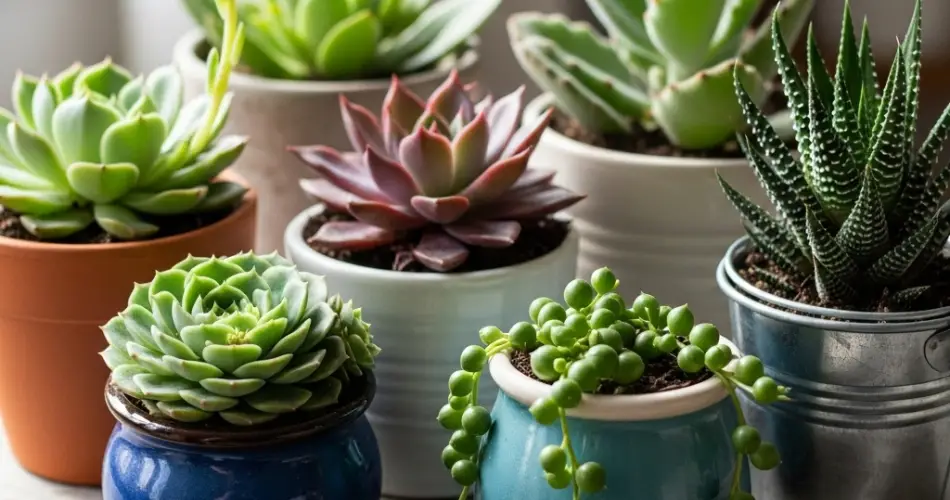Succulents have long captivated plant enthusiasts with their unique shapes, vibrant colors, and low-maintenance care. While cacti are perhaps the most familiar members of the succulent family, the world of succulents extends far beyond these spiny plants. Rare and exotic varieties offer stunning foliage, intriguing forms, and fascinating growth habits that make them prized additions to any indoor or outdoor garden. Exploring these less common succulents provides a new level of gardening creativity and aesthetic appeal.
Understanding Succulent Diversity
Succulents are defined by their ability to store water in fleshy leaves, stems, or roots, enabling them to thrive in arid conditions. This adaptation has led to a remarkable diversity of species, each with distinctive characteristics:
-
Leaf shapes: Succulent leaves can be pointed, rounded, tubular, or even triangular, often forming rosettes or geometric patterns.
-
Color variations: From deep greens and purples to pastel pinks and blues, succulents exhibit an extraordinary range of colors that may shift depending on sunlight, temperature, or water availability.
-
Growth habits: Some succulents grow upright, others trail or cascade, and certain species produce unusual textures or patterned leaves that add visual interest to any collection.
Understanding this diversity helps gardeners select varieties that suit their space, climate, and design goals.
Rare Succulent Varieties to Explore
While common succulents like echeverias, jade plants, and aloe are widely cultivated, rare and exotic species offer unique appeal:
-
Lithops (Living Stones): These small, stone-like succulents mimic pebbles in their natural habitat. Lithops are fascinating for their camouflage abilities and tiny, daisy-like blooms. They require bright light and minimal water.
-
Haworthia truncata: Known for its striking, truncated leaves that grow in neat rows, this species is both compact and visually dramatic. It thrives in well-draining soil and moderate sunlight.
-
Gasteria species: Often overlooked, gasterias have thick, textured leaves with unique patterns and are well-suited for shade or indoor conditions.
-
Crassula ‘Buddha’s Temple’: This rare Crassula forms a stacked, geometric column resembling miniature pagodas, making it an architectural statement in any garden.
-
Senecio serpens (Blue Chalksticks): With its powdery blue, trailing stems, this succulent is ideal for hanging planters or as groundcover in warm climates.
These varieties provide gardeners with unusual forms, colors, and textures, offering an artistic dimension beyond traditional succulents.
Tips for Cultivating Exotic Succulents
While rare succulents can be more demanding than their common counterparts, understanding their basic requirements ensures success:
-
Soil: Use a well-draining mix, often a blend of cactus soil with added sand or perlite to prevent root rot.
-
Light: Most exotic succulents prefer bright, indirect sunlight. Some tolerate direct sun, while others thrive in partial shade. Observing leaf coloration and growth patterns can help determine their ideal lighting.
-
Watering: Follow the “soak and dry” method—water thoroughly when the soil is dry, then allow it to dry out completely before watering again. Overwatering is the most common cause of succulent decline.
-
Temperature and humidity: Exotic succulents often originate from specific climates, so providing stable temperatures and avoiding excessive humidity helps prevent fungal issues and leaf damage.
With these basic practices, even rare species can thrive indoors or in suitable outdoor environments.
Creative Display Ideas
Rare succulents lend themselves to artistic presentations:
-
Terrariums: Small, slow-growing succulents like lithops or Haworthia thrive in glass terrariums with good drainage.
-
Succulent gardens: Grouping diverse textures and colors in shallow containers creates a living mosaic that draws attention.
-
Vertical gardens: Trailing succulents such as Senecio or string-of-pearls can cascade from wall-mounted planters for a dramatic effect.
-
Mixed arrangements: Combining rare succulents with common species allows the unusual forms to stand out while creating a balanced visual composition.
Creative displays highlight the distinctive features of exotic succulents and elevate the aesthetic of any space.
The Appeal of Rare Succulents
Collectors and enthusiasts are drawn to rare succulents for their uniqueness and the challenge of cultivation. These plants offer more than ornamental value—they represent a connection to diverse ecosystems, evolutionary adaptations, and the artistry of living design. Incorporating rare succulents into a garden or indoor collection can transform ordinary spaces into extraordinary displays of natural beauty.
Final Thoughts
Exploring rare and exotic succulent varieties expands the possibilities of indoor and outdoor gardening. From the camouflaged Lithops to architectural Crassulas, these plants bring unique shapes, colors, and textures that inspire creativity and fascination. By understanding their specific needs, including soil, light, and watering requirements, gardeners can enjoy thriving, vibrant specimens. Moving beyond the familiar cactus opens a world of botanical wonder, making rare succulents both a joy to cultivate and a conversation-worthy addition to any plant collection.



